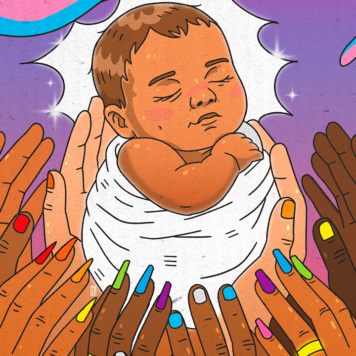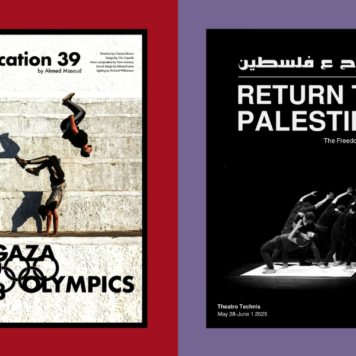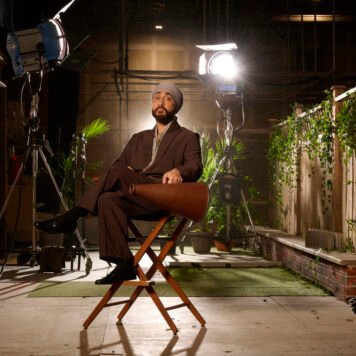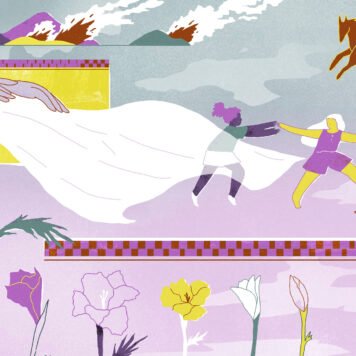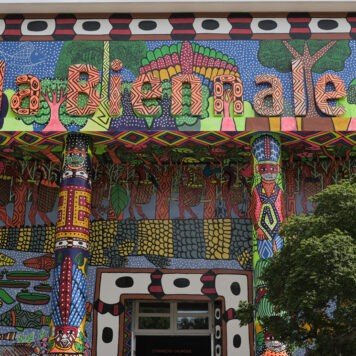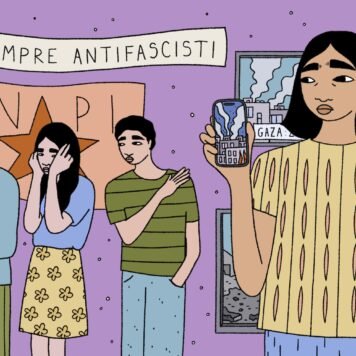In May, I came across an announcement for a Sudanese Film Group screening. The announcement was made in the aftermath of a Post-Memory, Post Archive Screening at the Goethe Institute in Lagos, Nigeria, centred on Nigerian film from the 60s-80s. It was intriguing because I had never engaged with the cinema of Sudan, and the announcement gave off the feeling of reflected realities in these two countries.
As a filmmaker and writer, I believe that a nation’s cinema should reflect (and critique) the realities of its society; to be windows into worlds people have yet experienced. So, I made a point to go along and learn about this world I didn’t know much about, but which seemed so close to one I did.
The Sudanese Film Group
Sudan’s history has been tumultuous, with hard-fought civil wars and a host of other confrontations. In amongst all that struggle, the arts still emerged, determined to communicate the nation’s identity outside of this violence and to document its people and their inventiveness. The very fact that there was a cinema-rich period in Sudan from the 60s to the 80s is a testament to the filmmakers’ ability to overcome seemingly insurmountable obstacles.
Sudanese filmmakers Suliman Elnour, Eltayeb Mahdi and Ibrahim Shaddad worked in the Ministry of Culture film department in the 70s and 80s, creating state-sponsored films and contributing to the film magazine, CINEMA. In April 1989, they founded the Sudanese Film Group (SFG) to precisely document the realities of Sudan, creating films outside of state control. As Ibrahim Shaddad would describe it, cinema wasn’t done for money but to create cinematic awareness in the communities they travelled to for screenings they had organised.
The group’s operations were cut short less than two months later. The Omar al-Bashir-helmed Revolutionary Command Council for National Salvation (RCC) coup of June 30, 1989, crippled expression in Sudan. As his theocratic administration came in, so too did distrust of all forms of art. During that 30-year rule, there was virtually no access to the Sudanese film archives, and a lot of filmmakers fled Sudan, seeking safety and freedom from restrictions.
With the filmmakers either in exile or their creativity gagged by the dictatorial government, Sudanese cinema experienced years of disrepair and creation stagnated, with filmmakers having to bear the brunt of the financial burden of production. When films were made, they were done so sparingly and often inspired government backlash and repression. The archives continued to waste away, only manned by two individuals, Awad Eldaw and Benjamin Chowkwan Ado, and with no real governmental or institutional support.
Foreign exploitation
This tumultuous backstory is part of the reason I felt so privileged to watch five films made by members of the Sudanese Film Group at the Sudanese Cinema Screening organised here in Lagos, Nigeria by the microcinema group, Monangambee. Three in particular stood out to me.
The first film shown – a 15-minute documentary, Al Mahatta (The Station), made in 1989 by Mahdi – does a great job of creating a contrast between foreign interests and the Sudanese people’s economic plight.
Al Mahatta is very much a stream of consciousness in images, portraying how the welfare of the Sudanese people is overlooked in favour of the country’s economic advancement. The Sudanese people and the budding industrialisation of the Sudanese economy at this point are very much placed at odds at this large crossroads in the desert, between Khartoum and Bur Sudan, where almost all the film was shot. People wait in the sun, ostensibly to cross the desert on foot, a few working on the trucks used to exploit their natural resources for foreign interests as other trucks drive down this crossroads.
There’s a flash of images showing a group crossing with a sick child on a donkey as money changes hands at a Shell-owned gas station, an indictment of imperialism still being perpetuated in Sudan’s late 1980s. The trucks plying the Sudanese roads are shown to be from the USA and the UK, powers that are only happy to exchange colonial control for subtle neocolonial realities, an ideal that communicates the slowed progress of decolonisation at this point in Sudan’s history.


Art continues to imitate life
Most of the postcolonial cinematic offerings in Africa attempt to evaluate the effects of colonisation on the nation, and this film was of the same critical ilk. It’s a fabulously made documentary in all respects; relevant also, as we find the same sort of foreign interests represented on both sides of the current war and humanitarian crisis in Sudan. The film left me with a feeling of deepening disdain for foreign intervention, as it mirrored the continuing prioritisation of these interests over Sudanese lives in the now.
For example, the UAE, from a secluded base in Chad, is supplying weapons and medical assistance to the Rapid Support Forces (RSF), a paramilitary group tussling for control against Sudan’s military, the Sudanese Armed Forces (SAF), in exchange for leeway to mine Sudanese gold, a precious resource for the Emirates. The SAF, led by General Abdul Fattah al-Burhan, have their own share of international “support” as Eritrea provides training camps for their soldiers, and countries like Iran supply arms to the Sudanese military, presumably for their various points of interest in the resultant windfalls of Sudanese Junta victory.
It adds a continuing complexity to the nation’s raging conflict, with so many foreign players involved, and no consideration for the lives being lost in the carnage that continues to rage across Sudanese lands, displacing millions and destroying essential societal structures.
Real money for fake miracles
With the second film – the 1977-made, 17-minute Al Dhareeh (The Tomb), Mahdi turns his attention to religion and its ills. A Sheikh declares a burial tomb a holy ground on account of a saint buried therein, and sets up shop for miracles and healing in the desert. The problem with the declaration is this: the “tomb” is nothing more than the resting place of a bag of millet, buried by a farmer and his son for safekeeping, in the time before the Sheik’s arrival.


Made in Egypt (it was Mahdi’s film institute graduation project) but based on a Sudanese story, it follows the effects of the inadequacies of state leadership, with people finding solace and hope in religion, dutifully exploited by despicable religious leaders, even in times of communal hardship, like the famine mentioned by the farmer in the film.
The Sheikh charges these impoverished people for sessions with him, taking advantage of their desperation to make money. Even when the son of the farmer proves the tomb to be nothing more than a fraudulent holy ground, his father admonishes him – showing the far-reaching results of religious indoctrination and the possible continuation of that exploitation.
The film harks back to the contentious theocratic background of the Second Civil War, with the 1983 attempt of Ja’far Muhammad Numayri’s corruption-riddled government to make Sudan a Sharia state one of the key disputes, and later, also one of the key considerations for the Naivasha Agreement between Sudan and the Sudan People’s Liberation Army in 2005, which resulted in the independence of South Sudan in 2011.
It may not be the only factor to consider – given the complexities that birthed the First (and Second) Civil War – but it’s very clear that for Mahdi in 1977, it was important enough to focus on.
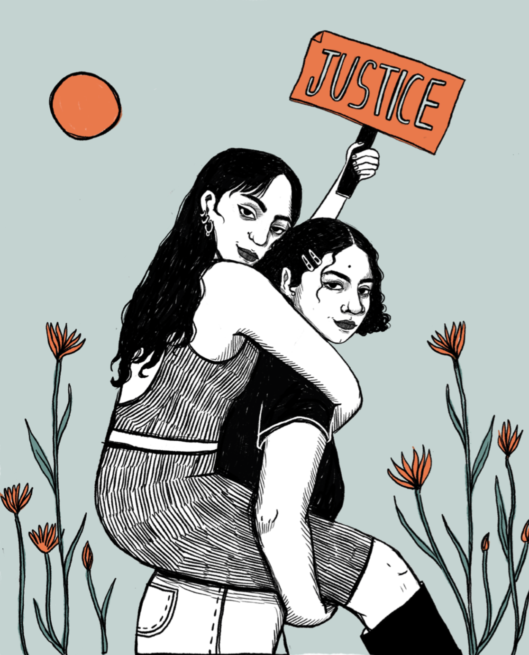
Join our mailing list
Sign up for shado's picks of the week! Dropping in your inbox every Friday, we share news from inside shado + out, plus job listings, event recommendations and actions ✊
Sign up for shado's picks of the week! Dropping in your inbox every Friday, we share news from inside shado + out, plus job listings, event recommendations and actions ✊
The circular path of perceived progress
Another film I found intriguing was Jamal (A Camel), a 1981-made, 13-minute film by Shaddad, which tells a story of work and exploitation all from the perspective of a camel. I was also deeply intrigued by the point of view the story was told through, with this film reminding me of Jerzy Skolimowski’s EO (2022) which is told from the perspective of a donkey.
It’s a life trapped indoors, walking around, blindfolded (to stave off nausea from the circular path), all in service of a millet processing mill. The camel, badly treated and fed poorly, yearns for freedom and the death of its master. This is shown through imagined sequences, with the master crushed under a tractor, also a mark of liberty through industrialised progress.
When customers arrive to purchase from its master, the camel imagines itself as the customers, clothed in their garb, free to leave once transactions are made. As it works blindfolded, it makes a grating sound, one possibly of acknowledgement of the situation and resistance in some way, but not in the way that matters. The camel, in its final act of imagined freedom, imagines its master blindfolded, walking that same circular path of indiscriminate exploitation, beholden to the whims of the camel, just as its burden falls upon it at the start of a new day.
I believe that the circular path represents perceived progress, and that this film is a critique of the systems that bind us to capital and exploit our surplus value as they continue to warp our ideas of progression. The film also provides an example of the ingenious storytelling capabilities of Sudanese cinematic (and artistic) voices, all forcibly scattered across the diaspora in the face of the violence and loss incurred in the current war. Few artists remain in Sudan working, with little to no critical engagement, amidst shortages in basic utilities, familial losses, loss of property and crumbling financial stability.
Since the 2019 revolution in Khartoum, a significant number of artists have been forced to flee to Kenya and Egypt to work in exile, losing significant amounts of period-specific artistic expression. I believe Jamal mirrors the lack of consideration that the warring parties have for the suffering civilians, and the soldiers conscripted into (and burdened with) their ideological war– a war that both sides would claim is waged in the name of progress.

The future of film in Sudan
In 2018, the Arsenal – Institute for Film and Video Art, an independent film institute based in Berlin, worked with these filmmakers to restore (as much as they could) seven of these films made during that important period in Sudanese history, producing a DVD and an accompanying 72-page booklet containing important information about the films in 2020. This was a crucial act of restoration and preservation, a chance to celebrate Sudanese film history and a chance for the younger Sudanese generation – and the world – to engage with it.
In that same year, You Will Die at Twenty, a film by Amjad Abu Alala, became Sudan’s 8th-ever produced feature film. It was also the first-ever Sudanese submission to the Oscars. The filmmaker braved the chaos of the revolution and shot in Northern Sudan, bringing in whatever was needed to make the film on Sudanese soil.
Looking at these occurrences, there seemed to be a growing belief among artists and filmmakers in Sudan that they’d be able to build anew the repressed industry that existed under Omar al-Bashir’s imposed ban.
Once the ban was lifted, Shaddad and his peers continued to work in Sudan, holding workshops to train and providing the tools needed to create films. In Omdurman, they engaged with the communities, looking to translate their issues into films. The Mobile Cinema for Social Change did become very popular, but their activities came to a halt – and they lost the centre and their materials – with the emergence of another war which continues to this day.
The promise that came with the removal of Omar al-Bashir from power and the subsequent referendums which showed favour for a political transition is now a scarcely remembered treaty, with the country thrown into another civil war on April 15th 2023. By December of that year, over 5.8 million people had been internally displaced and more than 1.5 million had fled the country as refugees.
Salvaging what was left behind
Today, more than 10.2 million people have been displaced. In August, the Famine Review Committee officially confirmed famine in the Darfur region of Sudan. An estimated 25 million people – half of the country’s population – need humanitarian assistance and protection.
Two of the founding members of the SFG, Shaddad and Elnour, fled to Egypt with their families in June 2023, with five other members also in exile in Cairo, leaving behind their life’s work and possessions.
The post-al-Bashir landscape promised, for the arts and culture of Sudan, the freedom to begin to rebuild structures that were lost in decades of war and destruction. Given the horrifying day-to-day reports from Sudan, that hope is once again buried. A national art and cinematic identity is being lost in real-time, with salvage and preservation efforts almost impossible considering the current landscape of the country.
Alongside the work of Arsenal, who have sought to do its best for the filmmakers as they pick up their lives and work again, Sudanese filmmaker Suhaib Gasmelbari’s efforts in digitising and restoring some of these films stand as critically important work, connecting others like him to the neglected history of film in their home country. Even though Sudan’s situation is bleak at the moment, we can only hope that freedom, peace and prosperity will emerge again.
What can you do?
Read:
- What is going on in Sudan?
- An academic paper I found very critical to understanding Sudan’s cinematic landscape
- A Metrograph interview with the members of the Sudanese Film Group
- The African Report Interview with Ibrahim Shaddad
Watch:
- Link to the Arsenal DVD
- Talking About Trees by Suhaib Gasmelbari
- Sudan’s Forgotten Films by Suhaib Gasmelbari for Al Jazeera on Youtube
- Cinema in Sudan: conversations with Gadalla Gubara by Frederique Cifuentes
Listen:


